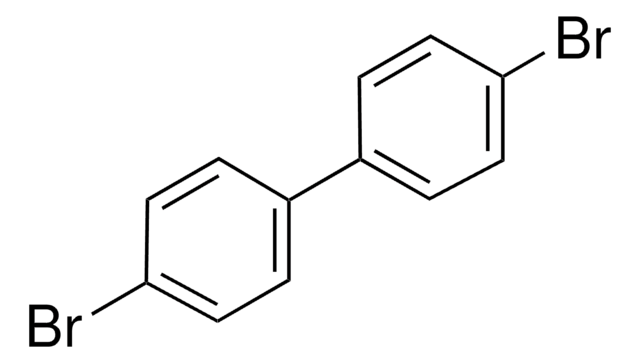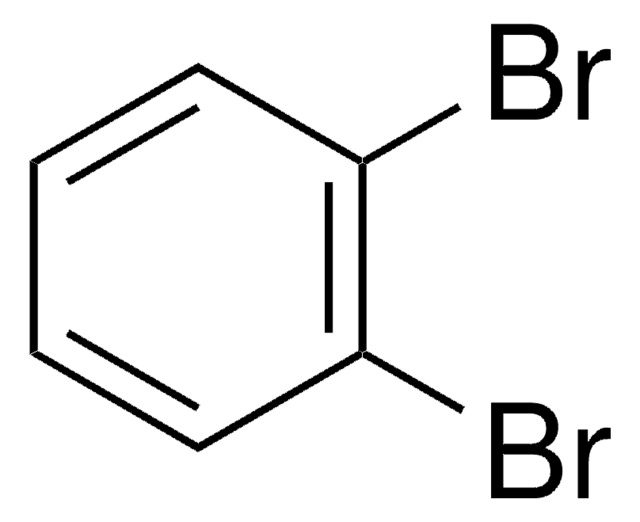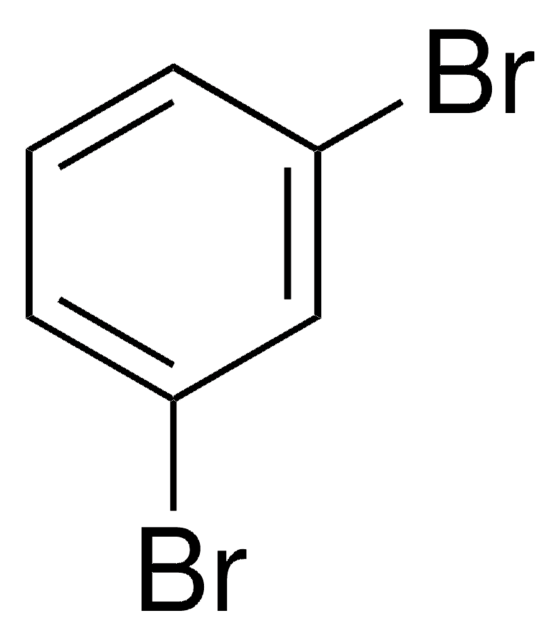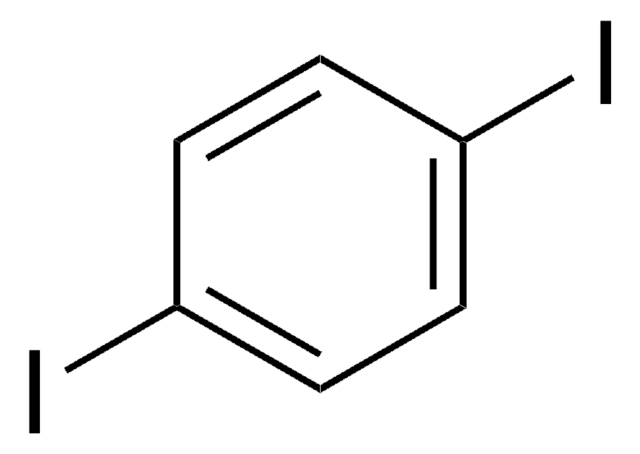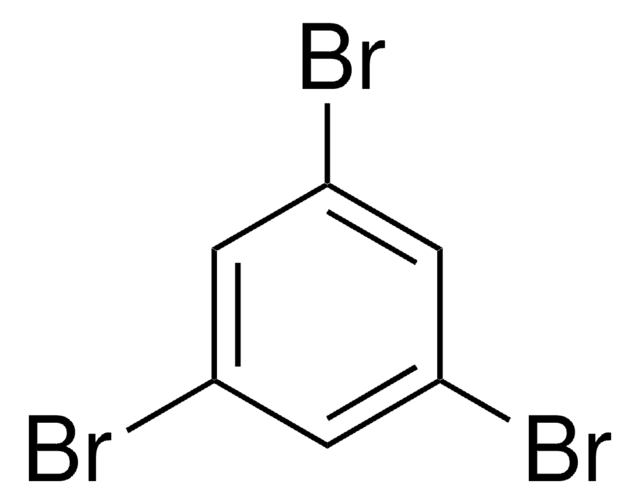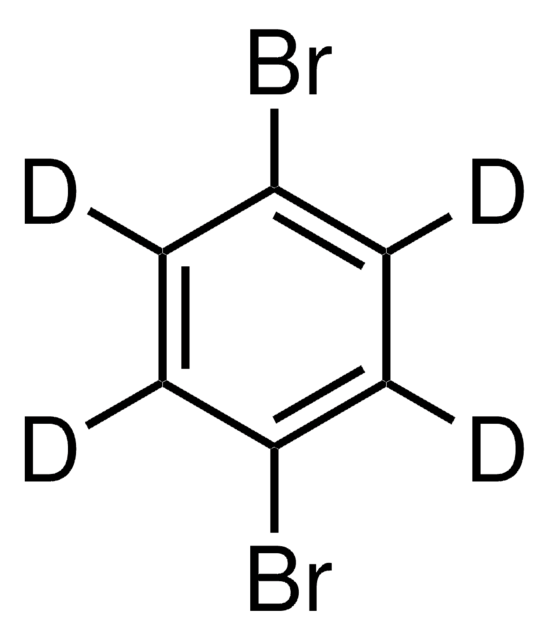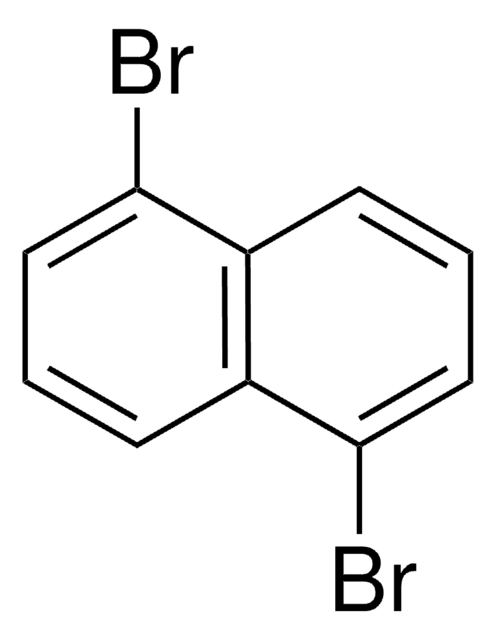D39029
1,4-Dibromobenzene
98%
Synonym(s):
1,4-Dibromobenzene, 1-Bromo-4-bromobenzene, p-Bromophenyl bromide, p-Dibromobenzene, p-Phenylene dibromide, para-Dibromobenzene
About This Item
Recommended Products
Quality Level
Assay
98%
form
crystals
bp
219 °C (lit.)
mp
83-87 °C (lit.)
density
1.841 g/mL at 25 °C (lit.)
SMILES string
Brc1ccc(Br)cc1
InChI
1S/C6H4Br2/c7-5-1-2-6(8)4-3-5/h1-4H
InChI key
SWJPEBQEEAHIGZ-UHFFFAOYSA-N
Gene Information
human ... CYP2A6(1548)
mouse ... Cyp2a5(13087)
Looking for similar products? Visit Product Comparison Guide
Signal Word
Warning
Hazard Statements
Precautionary Statements
Hazard Classifications
Aquatic Chronic 2 - Eye Irrit. 2 - Skin Irrit. 2 - STOT SE 3
Target Organs
Respiratory system
Storage Class Code
11 - Combustible Solids
WGK
WGK 2
Flash Point(F)
212.0 °F - closed cup
Flash Point(C)
100 °C - closed cup
Personal Protective Equipment
Choose from one of the most recent versions:
Already Own This Product?
Find documentation for the products that you have recently purchased in the Document Library.
Customers Also Viewed
Our team of scientists has experience in all areas of research including Life Science, Material Science, Chemical Synthesis, Chromatography, Analytical and many others.
Contact Technical Service